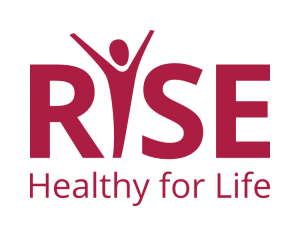The media plays a huge role in how we think about sex and sexuality. Using TV clips, movie scenes, ads and songs, we will explore how the media portrays sexual violence. We will also discuss how we can use the media to have constructive conversations regarding sexual violence in our daily lives.
Training Hub
The Sex Education Collaborative Training Hub lists trainings for sex educators, facilitators, and other professionals on best practices for sharing important information with clients and the public. From teaching anatomy inclusively to effectively addressing bias in the classroom to addressing racial justice and equity in sex education, the Training Hub includes trainings, technical assistance, and policy support from state, regional, and national leaders in the field of sex education.
Please note: The Training Hub includes both in-person and online professional trainings. If you see a training you are interested in and it isn’t listed as virtual, please reach out directly to any of our members to find out what's possible!
Trainings Offered by State-Based and National Organizations
Displaying results 16 - 20 of 137Sexual Violence in the Media
- Indicator 3 (K-12): Describe three strategies for teaching students communication skills.
- Indicator 4 (K-12): Describe three strategies for incorporating the positive and negative impacts of communicating through technology into lessons on healthy relationships.
RISE provides facilitator training and support for sexual health educators, including workshops, consulting, and answering question-box questions.
Self-Care in the Classroom
Self-care is more than just bubble baths and facials; it is vital to our mental health and can include everyday activities, like walking and breathing. School staff can model healthy self-care and pass it along to their students. We will discuss what self-care can look like in your classroom both virtually and in-person.
- Indicator 1 (K-12): Demonstrate three techniques to create an inclusive and affirming learning environment. (S)
- Indicator 3 (K-12): Describe three elements of a trauma-informed approach to sex education.
- Indicator 4 (K-12): Demonstrate three strategies of a trauma-informed approach to sex education (e.g. giving trigger warnings before content on sexual assault and allowing students the right to pass as appropriate, etc.). (S)
Everyone's an Asset Builder
Research with millions of young people shows the power of people from all walks of life committing to do what they can to support all young people’s success. By participating in this highly interactive workshop, parents, educators, mentors, neighbors, youth workers, and community leaders will:
• understand the strengths and supports that are essential for young people’s success in school, work, and life, based on Search Institute’s research on Developmental Assets
• identify qualities of individuals who play powerful roles in young people’s lives
• discover opportunities in their everyday lives for making a positive difference
• make personal commitments to take personal action to support youth success
This training is appropriate for all trusted adults within the community.
- Indicator 1 (K-12): Demonstrate the ability to build rapport with students. (S)
Coming soon...
Additional Trainings offered by out-of-state organizations
- ‹ previous
- 16 of 49
- next ›
Creating Safer Spaces in the Classroom
Each of us has experienced some type of trauma, whether it is collective trauma- like a natural disaster- or a personal trauma- like sexual abuse. In the classroom, trauma can show up in ways that look like behavior issues and actions that require discipline. Participants will learn small changes that can make a big difference in the classroom for students who have experienced trauma.
- Indicator 1 (K-12): Demonstrate three techniques to create an inclusive and affirming learning environment. (S)
- Indicator 3 (K-12): Describe three elements of a trauma-informed approach to sex education.
- Indicator 4 (K-12): Demonstrate three strategies of a trauma-informed approach to sex education (e.g. giving trigger warnings before content on sexual assault and allowing students the right to pass as appropriate, etc.). (S)



